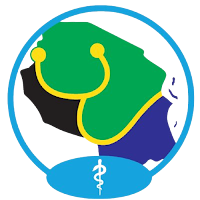The naïve approach ii - Seeking / Avoiding a Catastrophe
In addition to Dodson's book I borrowed:
| 'Catastrophe Theory' Image: Amazon |
GENERAL INTRODUCTORY PAPERS1. Catastrophe theory : Draft for a Scientific American article 12. Levels of structure in catastrophe theory 65BIOLOGICAL SCIENCES 803. Differential equations for the heartbeat and nerve impulse 814. Primary and secondary waves in developmental biology 1415. A clock and wavefront model for the control of repeated structures during animal morphogenesis (with J.Cooke) 2356. Gastrulation and formation of somites in amphibia and birds (Addendum by R. Bellairs.) 2577. Dialogue between a Biologist and a Mathematician 2678. Brain modelling 2879. Duffing's equation in brain modelling 293SOCIAL SCIENCES 30210. Some models in the social sciences (with C.A.Isnard) 30311. On the unstable behaviour of stock exchanges 36112. Conflicting judgements caused by stress 37313. A model for institutional disturbances (with C.S.Hall, P.J.Harrison, G.H.Marriage, P.H.Shapland) 38714. Prison disturbances 403PHYSICAL SCIENCES 40815. A catastrophe machine 40916. Euler buckling 41717. Stability of ships 441MATHEMATICS 49618. The classification of elementary catastrophes of codimension <= 5 (with D.J.A.Trotman) 49719. The umbilic bracelet and the double-cusp catastrophe 563DISCUSSION 60420. Research ancient and modern 60521. Catastrophe theory : its present state and future perspectives (with R.Thom) 61522. Afterthought 651
'Catastrophe theory (CT), as a new field in mathematics with many possible ramifications for both the physical and biological sciences, has recently been the subject of much controversy (see [1]-[5]). This controversy, in this reviewer's opinion, has served a valuable purpose insofar as it has stimulated the theory's proponents to refine and delineate their concepts more clearly. Catastrophe theory was developed by the Field prize winner, Rene Thom; but much work has been accomplished by E. C. Zeeman and his group, especially with respect to applications.' pp.609-610. IEEE TRANSACTIONS ON SYSTEMS, MAN, AND CYBERNETICS, VOL. SMC-9, NO. 9, SEPTEMBER 1979. https://ieeexplore.ieee.org/stamp/stamp.jsp?arnumber=4310286
'To write a review in this environment has a very personal side for me. On one hand my own work on dynamical systems is closely connected to the origins of CT. I have had a long and close personal and professional relationship with both Thorn and Zeeman. More than 20 years ago I was discussing singularities of maps, transversality, and immersions with René Thom. Thom tried to interest me in an early draft of chapters of his book Structural stability and morphogenesis in 1966.
On the other hand I have remained skeptical and aloof from CT, perhaps due to my conservatism in science. While my colleagues and students were showing enthusiasm for CT, I gave critical lectures, one at the University of Chicago in 1974, one at the Aspen Institute of Physics in 1975. More recently I have been quoted negatively in the "Science" and New York Times references above. This is the first time I have written on the subject, and I should warn the reader of this negative bias, far from shared by many of my fellow mathematicians.' p.1360.
Some defenders of CT may accuse me of discussing very special examples not characteristic of the literature of the subject. I feel that the problem of lack of justification discussed above, is also found in Zeeman's other models. Furthermore Thorn's models are even less specific and less developed. On the other hand, Thorn's work in CT covers many subjects; in this connection Zeeman writes in his Scientific American article, April 1976, p. 65: "The method has the potential for describing the evolution of form in all aspects of nature, and hence it embodies a theory of great generality."' p.1366.
 |
| Page 42. Figure 20. The effect of the butterfly factor, d>0. (Sorry for the image quality) |
- the global phenomena of famine
- - whether or not associated with economic crisis, drought, other natural disaster, or conflict, political crisis
- ultra-processed foods
- obesity pandemic
- weight loss drugs
- appetite stimulants
- appetite suppressants
- eating disorder (anorexia and bulimia) across care sectors - primary, secondary, specialist
- community / in-patient care
- person-centred care
- user involvement in service design
- the availability of treatment modalities - psychotherapy (as in the video)
- the impact on family relationships and peer group (estranged - loss of friends)
- diagnostic blurring - psychosis, borderline personality disorder - the rise of 'anti-psychiatry'
| COGNITIVE THERAPY EMPATHY&RAPPORT LISTENING - MUTUAL ENGAGEMENT MENTAL HEALTH DIAGNOSIS TRAINED / SKILLED STAFF EVIDENCE-BASED INTERVENTIONS* MOTIVATION MOOD MULTIMORBIDITY | RESEARCH EATING DIET NUTRITION NUTRITIONAL VALUE WEIGHT BMI IN-PATIENT UNIT place of safety |
PUBLIC HEALTH SOCIETY FAMILY CARERS | Developed nations are collectively and increasingly 'eating disordered' and exporting this 'lifestyle'. |



 orcid.org/0000-0002-0192-8965
orcid.org/0000-0002-0192-8965

